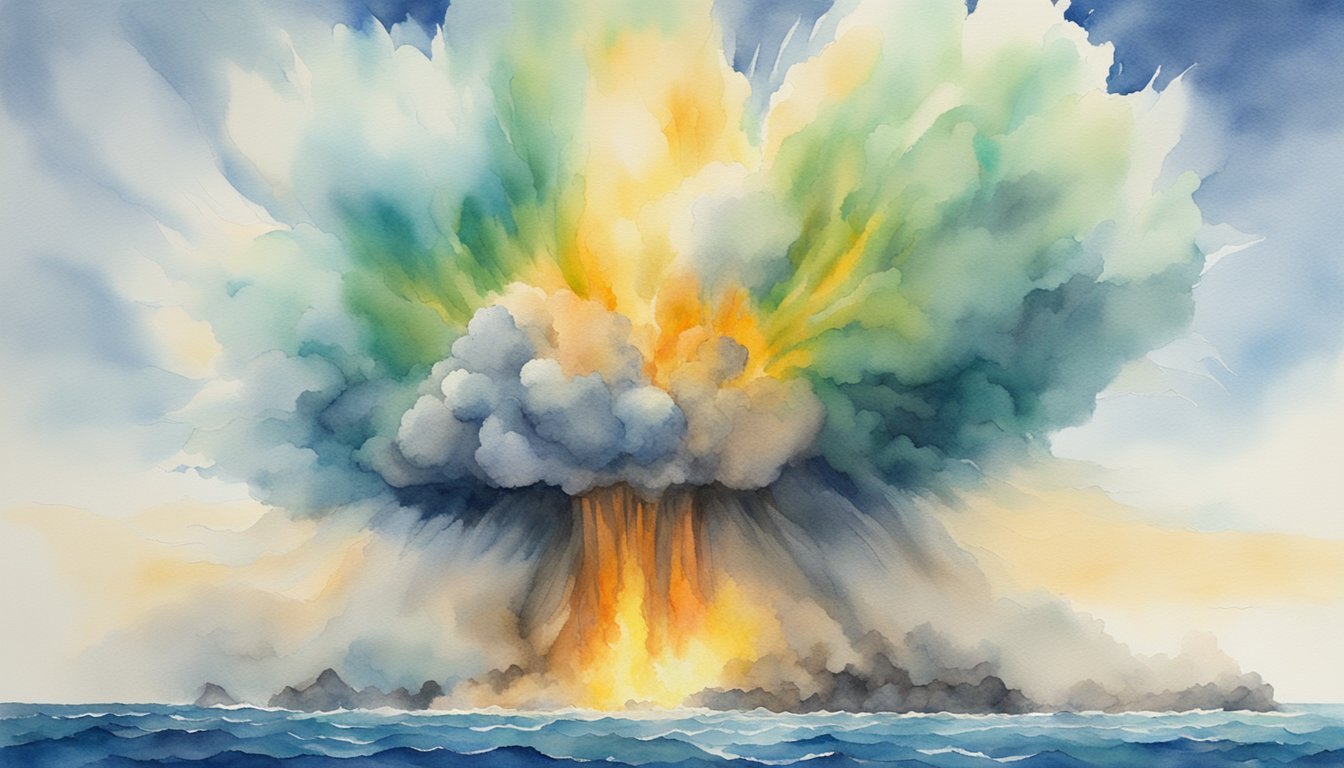History and Background of Christmas Island Nuclear Tests
The Christmas Island nuclear tests were a pivotal series of events during the Cold War period, signifying the United Kingdom’s efforts to develop and test thermonuclear weapons. This section seeks to detail the origins, operations, collaborations, and major activities that took place in and around Christmas Island, known today as Kiritimati, within the Republic of Kiribati.
Origins and Geopolitical Context
The motivation for the nuclear tests on Christmas Island was deeply rooted in geopolitics of the Cold War. The United Kingdom, aiming to maintain its status as a global power and deter threats, embarked upon a program to develop thermonuclear weapons. This strategic initiative was seen as vital in staying abreast with other nations, notably the United States and the Soviet Union, who had already showcased their nuclear prowess through the bombings of Hiroshima and Nagasaki.
Operation Grapple and its Missions
Operation Grapple, a series of four nuclear weapons tests, was conducted by Britain between 1957 and 1958 on and around Christmas Island. It involved the detonation of atomic and hydrogen bombs, with the aim of advancing the UK’s nuclear arsenal. These missions were some of the UK’s most significant advancements in the field, drawing upon extensive research and development that had been building since the Manhattan Project.
Collaboration with Allied Forces
The British military, in its pursuit of successful nuclear tests, worked closely with allied forces. This collaboration included deployment of New Zealand and Australian naval support, among other Commonwealth contributions. Additionally, the involvement of British servicemen and scientists was crucial to the planning and execution of these tests. The United States, while conducting its own tests under Operation Dominic, also played a role in this chapter of nuclear history through shared insights and resources.
Major Experiments and Detonations
The most notable experiments included the detonation of the first British hydrogen bomb, codenamed “Grapple X,” and later “Grapple Y,” both yielding powerful blasts. Additional experiments led to the detonation of “Orange Herald,” an atomic bomb considered to be the largest ever exploded by Britain. The tests produced significant data on nuclear explosions and fallout, influencing future designs and policies regarding thermonuclear weapons.
Impact and Consequences of the Tests

The nuclear tests conducted on Christmas Island have left a multifaceted legacy, touching health, ecology, socio-political structures, and even legal frameworks.
Health and Environmental Aftermath
The detonation of nuclear devices from the late 1950s to early 60s resulted in radiation exposure for those present during the tests and afterwards, contributing to various health problems. The release of ionising radiation has been linked with increased cases of cancer among military personnel, service workers, and local populations. The pristine coral atoll environment suffered significant contamination, with lingering effects on marine life due to nuclear fallout.
Compensation and Recognition Efforts
Efforts to secure compensation for atomic veterans and local islanders have seen varying degrees of success. The Ministry of Defence in the UK has faced numerous claims, with complainants seeking recognition for the health risks endured. Some veterans and Fijian soldiers have received medals, while others continue to press for acknowledgment and reparations.
Clean-Up Operations
Over the years, there have been steps taken towards environmental restoration. Clean-up initiatives have focused on the removal of contaminated soil and debris, yet some argue that these operations have not fully addressed the extent of environmental damage.
Legacy and Memory of the Tests
The tests have become an integral part of the history of Christmas Island, etched into the memory of its residents and the nations involved. Memorial efforts, such as those by the Association of Nuclear Victims in Kiritimati, help preserve the stories of individuals like Taabui Teatata, Kimaere Kiiba, and Buburenga Iotebwa, whose lives were forever changed by the tests.

